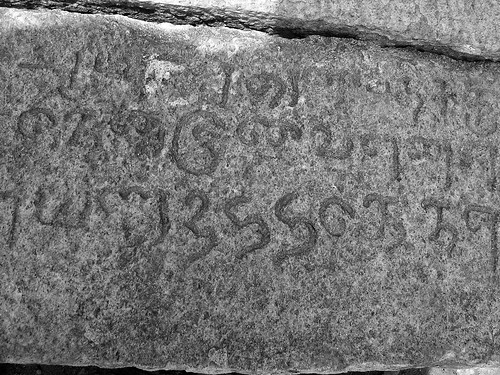Recently there was an interview on KQED with Amartya Sen on his new book Identity and Violence: The Illusion of Destiny . In the book Sen makes the argument that we tend to compartmentalize people with singular identities like American, or Iraqi or Muslim whereas a person could have multiple identities. “The same person can be, without any contradiction, an American citizen, of Caribbean origin, with African ancestry, a Christian, a liberal, a woman, a vegetarian, a long-distance runner, a historian, a schoolteacher, a novelist, a feminist, a heterosexual, a believer in gay and lesbian rights, a theater lover, an environmental activist, a tennis fan, a jazz musician,” etc.
. In the book Sen makes the argument that we tend to compartmentalize people with singular identities like American, or Iraqi or Muslim whereas a person could have multiple identities. “The same person can be, without any contradiction, an American citizen, of Caribbean origin, with African ancestry, a Christian, a liberal, a woman, a vegetarian, a long-distance runner, a historian, a schoolteacher, a novelist, a feminist, a heterosexual, a believer in gay and lesbian rights, a theater lover, an environmental activist, a tennis fan, a jazz musician,” etc.
He says that during communal riots, people focus on the single identity of opponents and hence are willing to murder strangers. For example, if you look at the the incident in Marad, Kerala or Kashmir, people were murdered because they were Hindus.
Not many people have taken kindly to this argument. For his argument Sen has tried to present a compassionate view of Islam which has not gone well with public. In an effort to present tolerance of Islam he wrote about Akbar and the example of Muslim rule in Cordoba and the Iberian Peninsula. He has even twisted one story to suit his purposes, the one about Jewish philosopher Maimonides, who according to Sen found refuge in a tolerant Arab world. Not so true says Fouad Ajami, writing in the Washington Post.
Here, for Sen’s benefit, is a passage from Maimonides’ seminal “Epistle to Yemen”: “Our hearts are weakened, our minds are confused, and our strength wanes because of the dire misfortunes that have come upon us in the form of religious persecution in the two ends of the world, the East and the West.” Maimonides’ geography was Islamic: The East in the “Epistle” was Yemen, then a battleground between Sunni and Shiite Islam, a place where Jews were being subjected to forced conversions to Islam; the Western lands were the burning grounds of Andalusia. The Almohads’ pitiless warriors were in every way the Taliban of their age, the ancestors of today’s religious radicals in the world of Islam. They put to the sword the fabled world of Andalusian tolerance, and young Maimonides witnessed the shattering collapse of that culture. [Free to be you and me in Amartya Sen’s world]
Writing in The Wall Street Journal, Tunku Varadarajan cites Sen’s background
To understand Mr. Sen’s desire to get away from religion-based political taxonomy, one must be aware of where, as they say, he is coming from. The Nobel laureate–who has taken to describing himself as a “feminist economist”–is a full-fledged member of the Indian “progressive” left. If there is one concern that drives this group, that animates its politics like no other, it is the perfectly well-meaning desire to safeguard India’s Muslim minority from the excesses of the country’s Hindu right. This desire has led to such contortions as the left’s defense of a separate personal law for India’s Muslims (which leaves Muslim women at the mercy of inequitable rules on divorce and inheritance) merely because the Hindu right campaigns for a uniform civil code for all Indian citizens, irrespective of religion.
See Also: What Argumentative Indian?, Nobel Prize-Winning Marxist puts Foot in Mouth
